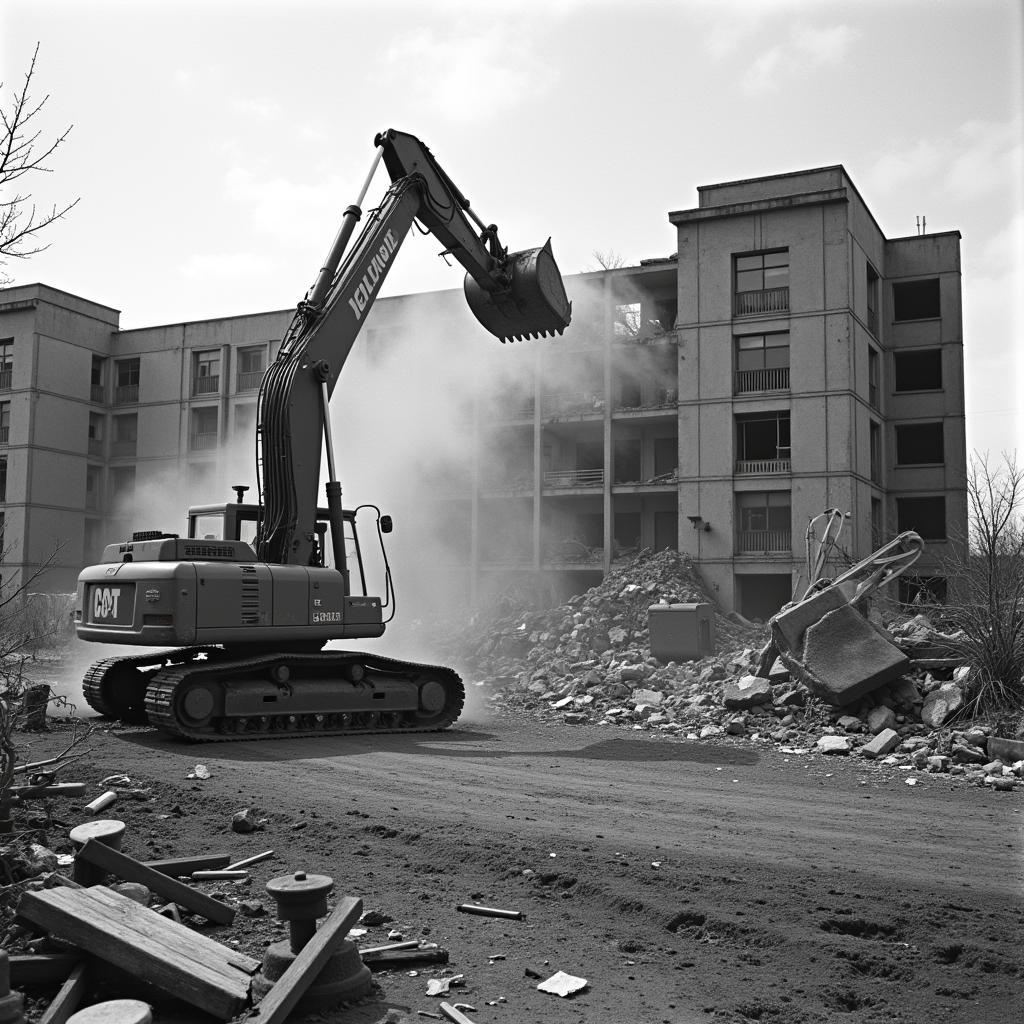The Norwich State Hospital Demolition marked the end of an era for the city of Norwich, Connecticut. For over a century, the hospital stood on its hilltop location, a prominent and sometimes unsettling landmark. This article delves into the history of the Norwich State Hospital, the reasons behind its demolition, and what the future holds for the site.
A Storied Past: The Rise and Fall of Norwich State Hospital
Opened in 1904 as the Norwich Hospital for the Insane, the institution was built to address the growing need for mental health care in Connecticut. Designed with the Kirkbride Plan, a popular architectural style for asylums at the time, the hospital aimed to create a therapeutic environment. However, as the decades passed, the institution faced challenges like overcrowding and underfunding, leading to a decline in living conditions and patient care.
By the late 20th century, the hospital was operating well below its intended capacity. Shifting attitudes towards mental health treatment and a move towards community-based care contributed to its decline. After years of debate and several failed revitalization attempts, the decision was made to close the Norwich State Hospital. The doors finally closed in 1996, leaving behind a collection of aging and deteriorating buildings.
The Demolition Process: A Complex Undertaking
 Demolition crew working on Norwich State Hospital
Demolition crew working on Norwich State Hospital
Demolishing a site as large and as historically significant as the Norwich State Hospital was no small feat. The project, which began in 2009, required careful planning and execution. Environmental remediation was necessary due to asbestos and other hazardous materials found within the buildings. The demolition process itself took several years, with crews systematically dismantling buildings and removing debris.
The demolition of the Norwich State Hospital was met with mixed emotions. Some felt a sense of loss at the erasure of a local landmark, while others saw it as a necessary step towards revitalizing the area.
Looking to the Future: Redevelopment Plans for the Site
With the demolition complete, attention turned to the future of the site. The vast acreage, overlooking the Thames River, presented a valuable opportunity for redevelopment. Several proposals have been considered, including mixed-use development with residential, commercial, and recreational spaces.
The goal is to create a vibrant new community while respecting the history of the site. Preserving green space and potentially incorporating elements of the former hospital into future designs are being explored. However, challenges remain, including infrastructure development and securing the necessary funding to bring these plans to fruition.
Norwich State Hospital Demolition: FAQs
1. When was the Norwich State Hospital demolished?
The demolition of the Norwich State Hospital was a multi-year process that began in 2009 and concluded in the early 2010s.
2. Why was the Norwich State Hospital demolished?
The hospital, closed in 1996, had fallen into disrepair and was deemed too costly to renovate. Demolition was seen as a necessary step for site redevelopment.
3. What are the plans for the former Norwich State Hospital site?
While plans are still under discussion, proposals for the site include mixed-use development incorporating residential, commercial, and recreational spaces.
4. Are there any plans to memorialize the Norwich State Hospital?
The potential for memorializing the history of the site, perhaps through plaques or a dedicated space, is being explored as part of redevelopment plans.
5. Where can I find more information about the history of the Norwich State Hospital?
The Norwich Historical Society and other local archives hold photographs, documents, and artifacts related to the hospital’s history.
The Norwich State Hospital: A Legacy Remembered
While the physical structures of the Norwich State Hospital are gone, its story continues to resonate. The site serves as a reminder of the evolving approaches to mental health care and the importance of community revitalization. As the city of Norwich moves forward, it carries with it the memory of this landmark institution and the hope for a brighter future on the horizon.